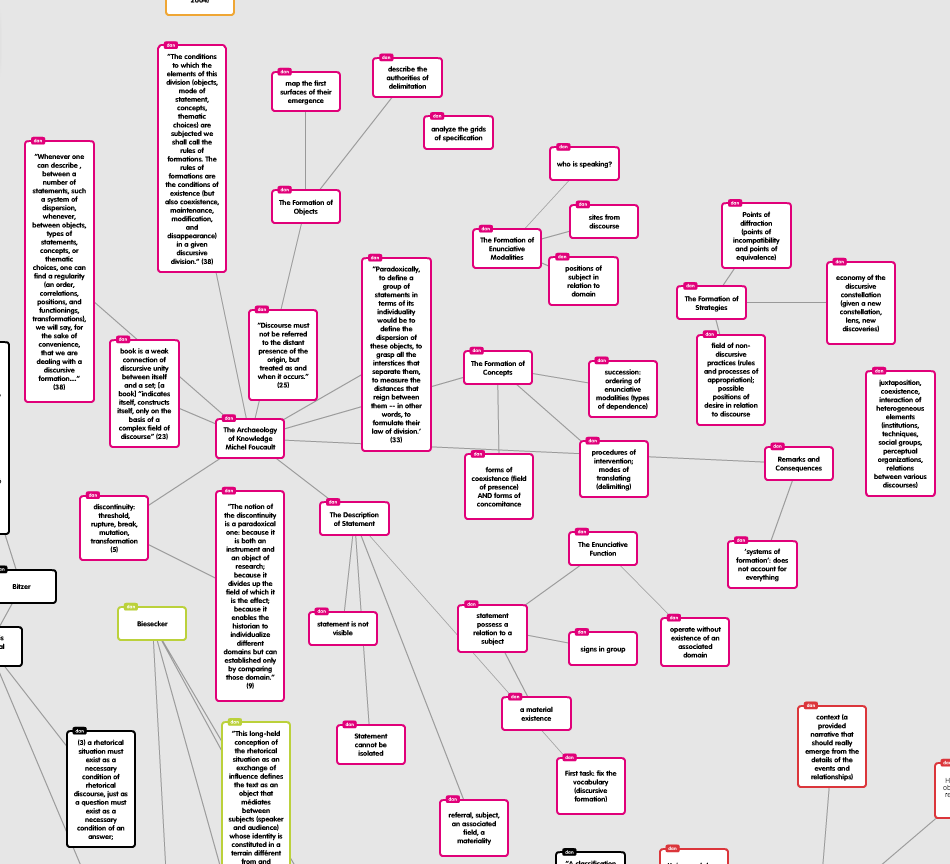Following the trend of the first week, I continued to make connections between the first week authors as I filled in more nodes from their works and created corresponding lines between the color-coded author-works. However, instead of bringing the authors together in concert, I spent time trying to isolate their “ruptures” (as a nod to Foucault) as I added in Foucault to the mix, spinning out from the structuralism present as branching paths from the central theme into thinner lines.
Captured in the screenshot below, the connections between ideas in Foucault can be constructed through lines linking the ideas composed under the terms and sub-categories he uses in his discussion within The Archaeology of Knowledge.




